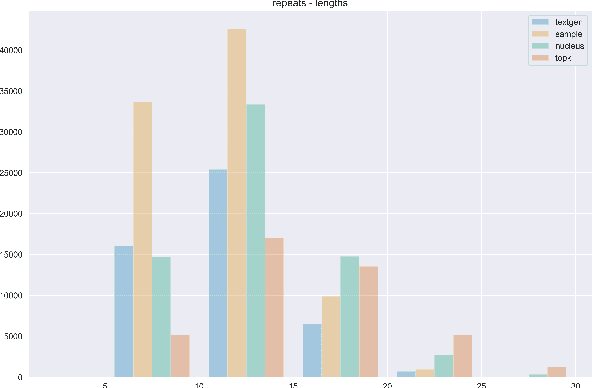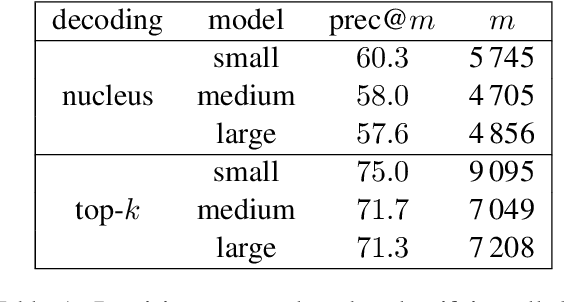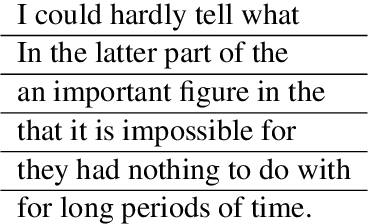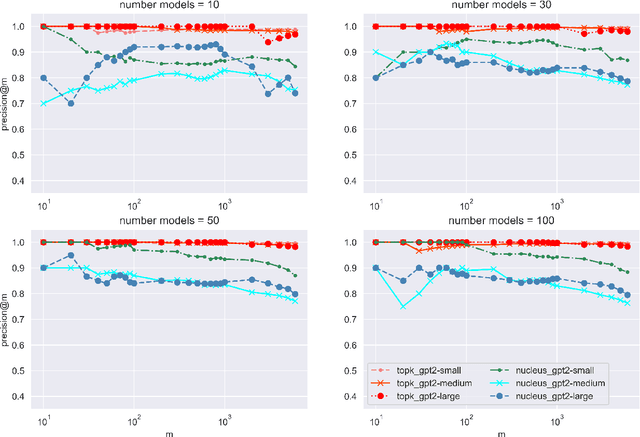Unsupervised and Distributional Detection of Machine-Generated Text
Paper and Code
Nov 04, 2021



The power of natural language generation models has provoked a flurry of interest in automatic methods to detect if a piece of text is human or machine-authored. The problem so far has been framed in a standard supervised way and consists in training a classifier on annotated data to predict the origin of one given new document. In this paper, we frame the problem in an unsupervised and distributional way: we assume that we have access to a large collection of unannotated documents, a big fraction of which is machine-generated. We propose a method to detect those machine-generated documents leveraging repeated higher-order n-grams, which we show over-appear in machine-generated text as compared to human ones. That weak signal is the starting point of a self-training setting where pseudo-labelled documents are used to train an ensemble of classifiers. Our experiments show that leveraging that signal allows us to rank suspicious documents accurately. Precision at 5000 is over 90% for top-k sampling strategies, and over 80% for nucleus sampling for the largest model we used (GPT2-large). The drop with increased size of model is small, which could indicate that the results hold for other current and future large language models.
 Add to Chrome
Add to Chrome Add to Firefox
Add to Firefox Add to Edge
Add to Edge